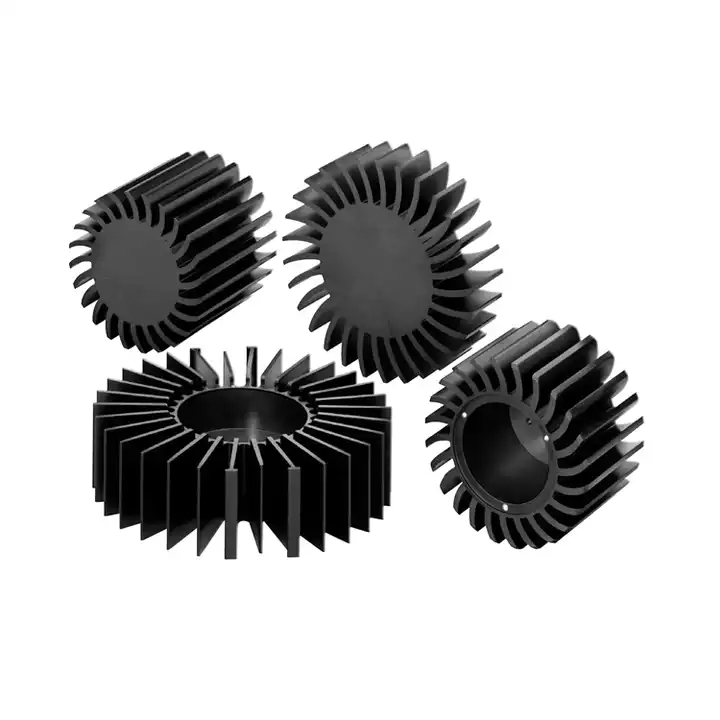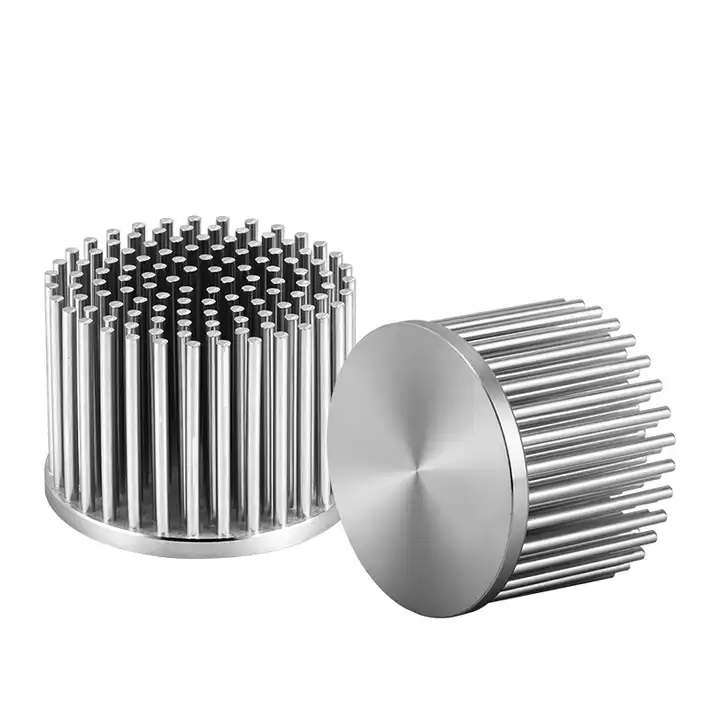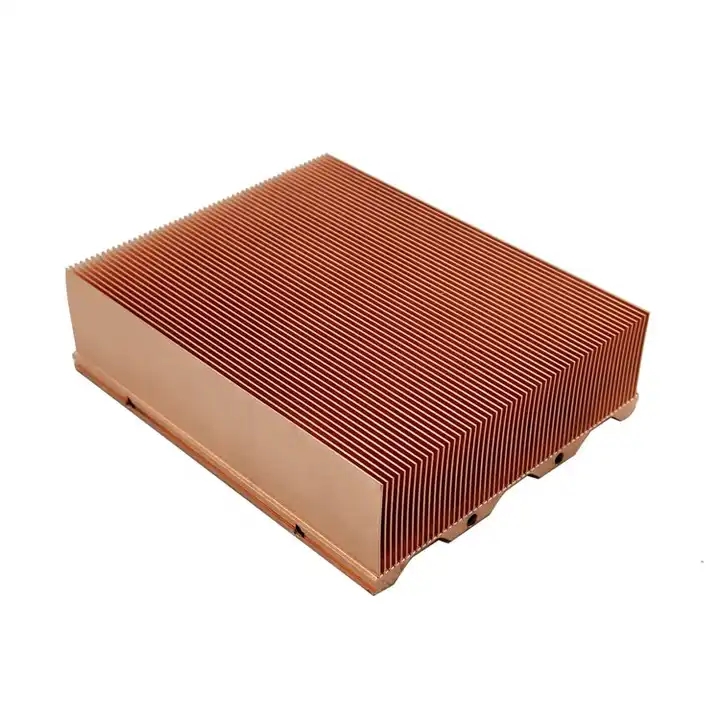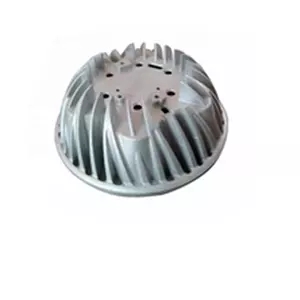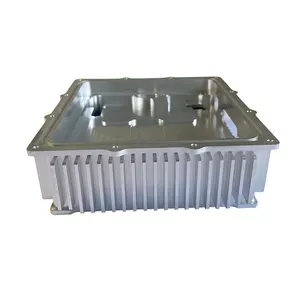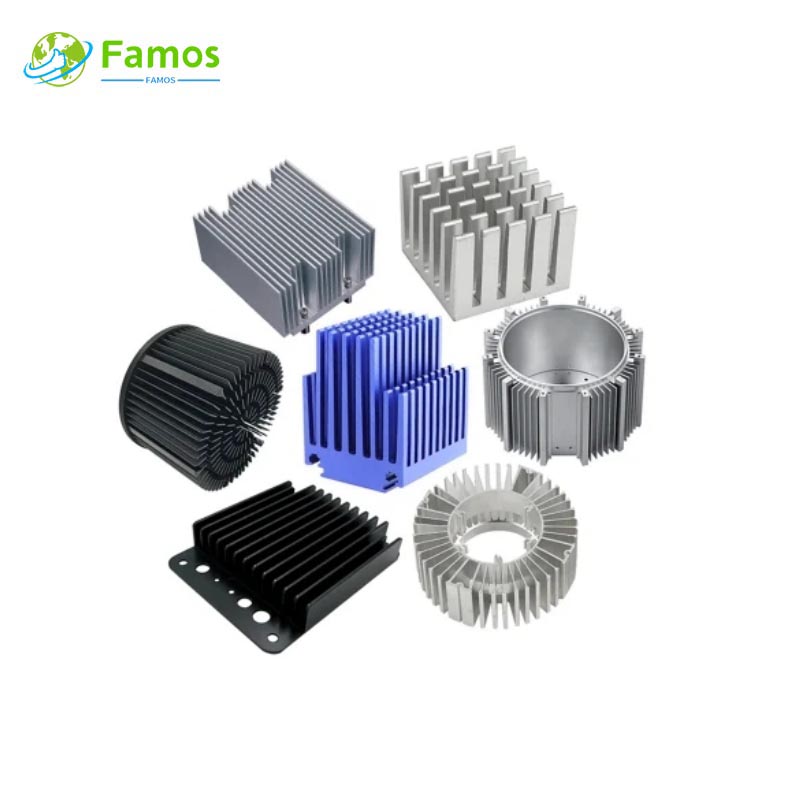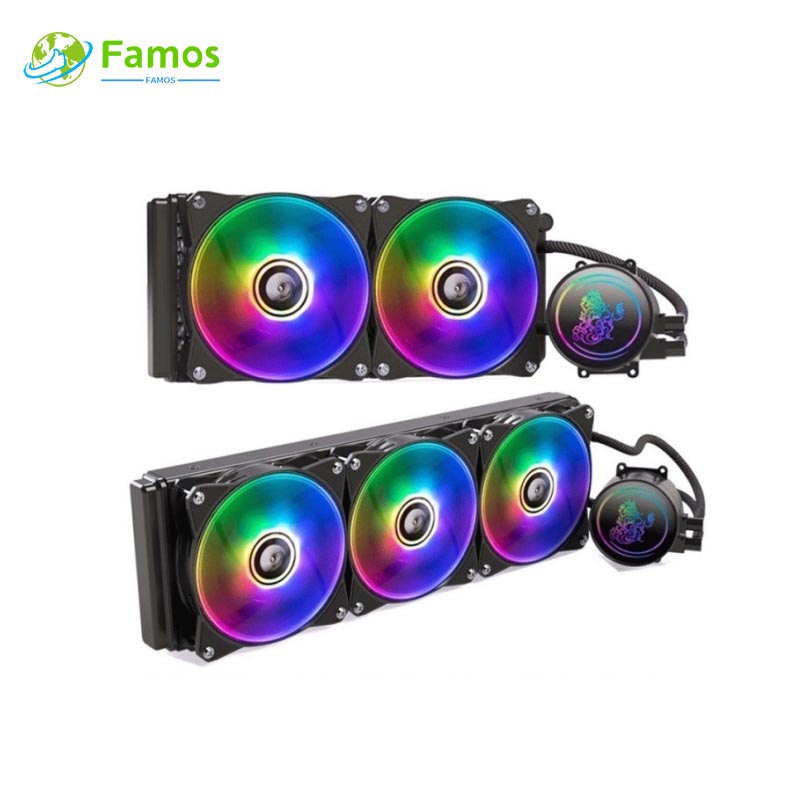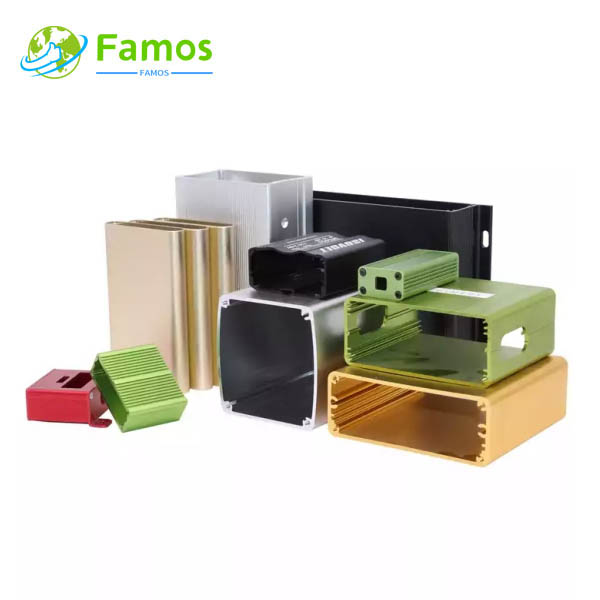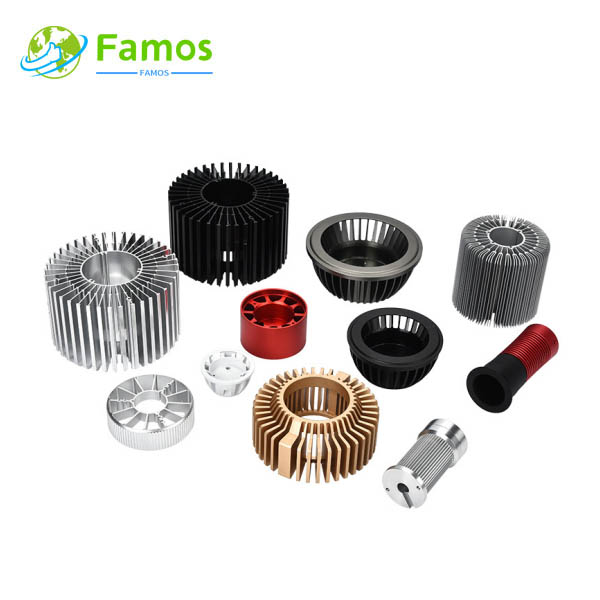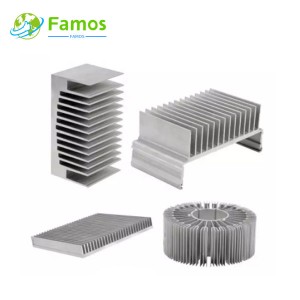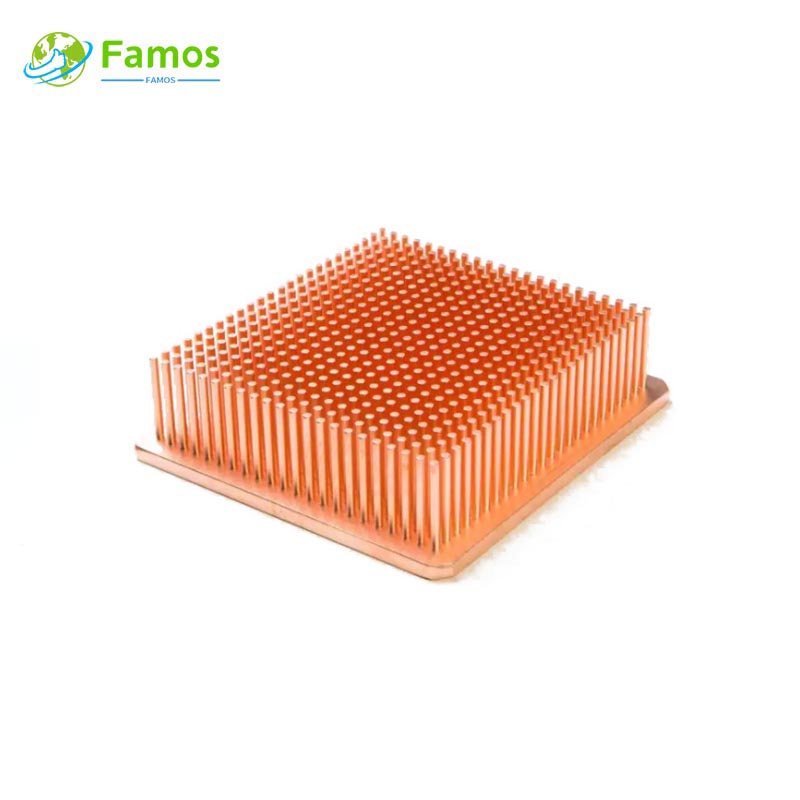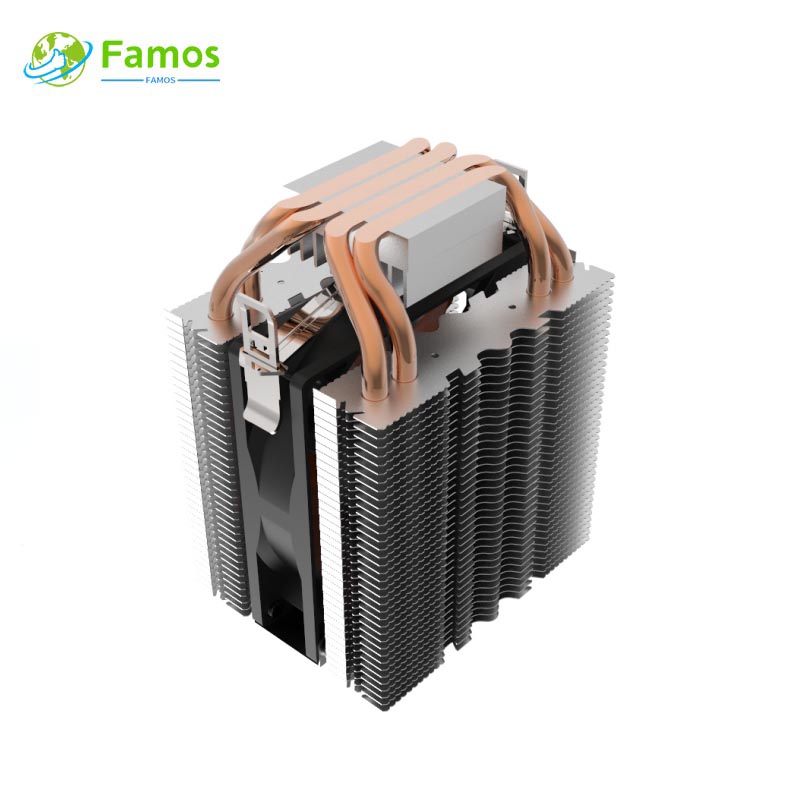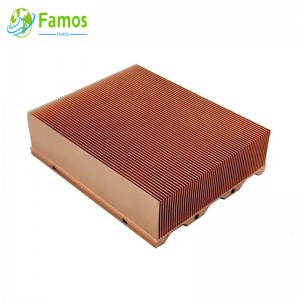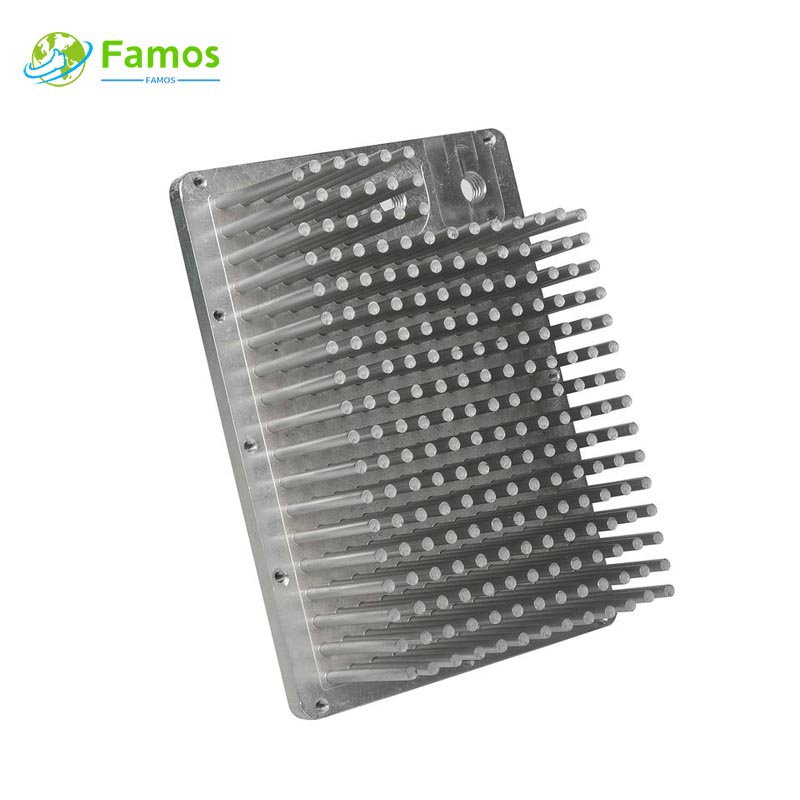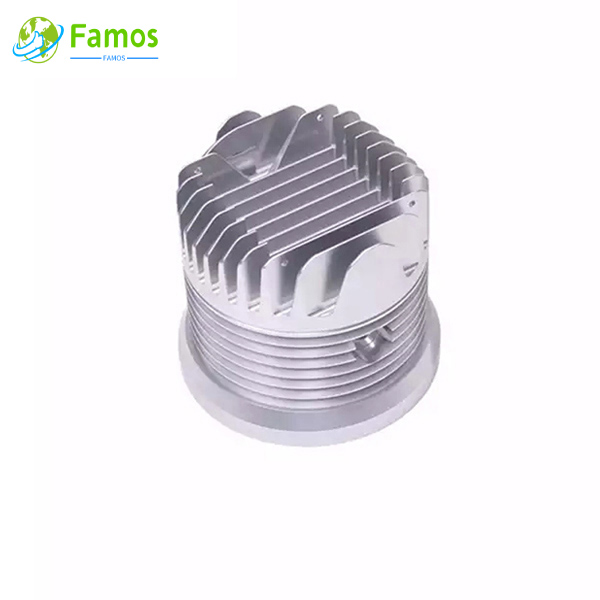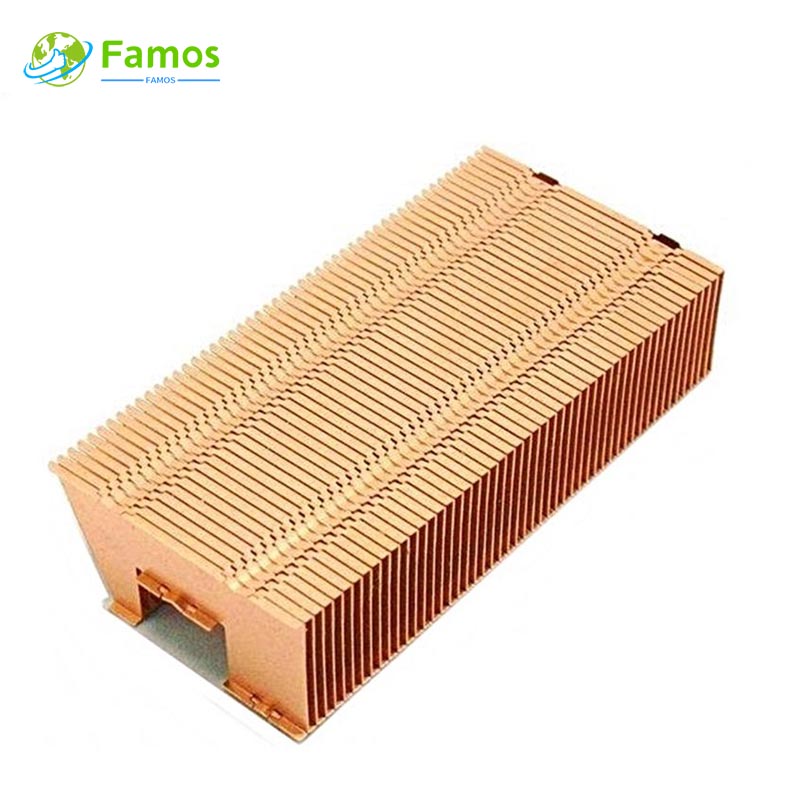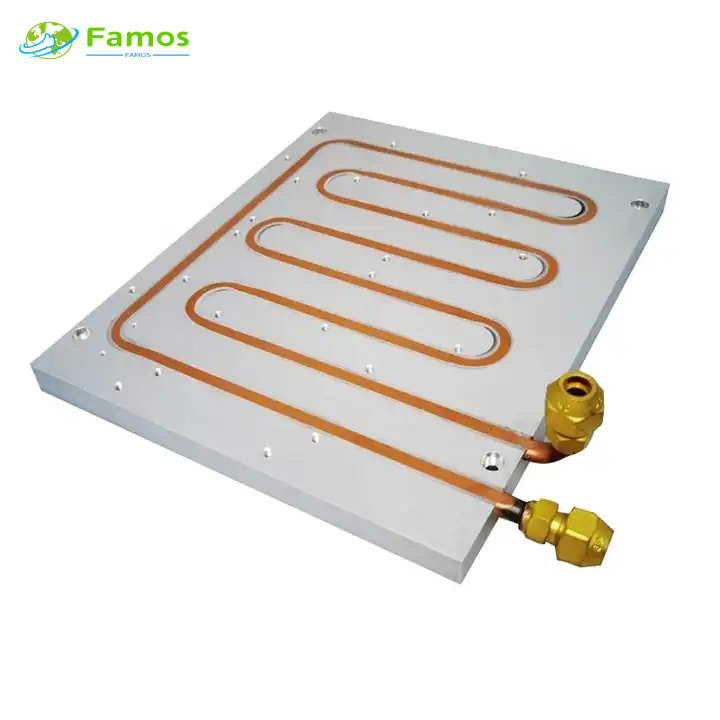There are several manufacturing processes used for heat sink production, and the best one depends on the specific requirements and characteristics of the heat sink. However, some commonly used heat sink manufacturing processes include extrusion, cold forging, skiving , die casting, and CNC machining. Here is an overview of each process:
1.Extrusion: Aluminum extrusion technology simply means heating the aluminum ingot at a high temperature of about 520-540 ℃, allowing the aluminum liquid to flow through the extrusion mold with grooves under high pressure to create the initial heat sink, and then cutting and grooving the initial heat sink to create the commonly used heat sink. Aluminum extrusion technology is relatively easy to implement and has relatively low equipment costs, which has also made it widely used in the low-end market in previous years. The commonly used aluminum extrusion material is Al 6063, which has good thermal conductivity and processability. However, due to the limitations of its own material, the ratio of thickness to length of the heat dissipation fins cannot exceed 1:18, making it difficult to increase the heat dissipation area in limited space. Therefore, the heat dissipation effect of aluminum extruded heat sinks is relatively poor,. Advantages: Low investment, low technical threshold, short development cycle, and easy production; Low mold costs, production costs, and high output; It has a wide range of applications, and can be used to manufacture both individual heat dissipation fins and fin parts of combined heat sinks.
2.Cold forging: Cold forging is a manufacturing process in which the aluminum or copper heat sink is formed by using localized compressed forces. Fin arrays are formed by forcing raw material into a molding die by a punch. The process ensures that no air bubbles, porosity or any other impurities are trapped within the material and thus produces exceptionally high quality products. The advantages are: low processing cost and high production capacity. The mold production cycle is usually 10-15 days, and the mold price is cheap. Suitable for processing cylindrical fins cold forging heat sink .The disadvantage is that due to the limitations of the forging process, it is not possible to produce products with complex shapes.
3.Skiving: A unique metal forming process that is the most promising for large-scale application in the integrated forming of copper heat sinks. The processing method is to cut a whole piece of metal profile as needed. Using a precision controlled special planer to cut thin sheets of specified thickness, and then bending them upwards into an upright state to become heat sinks. Advantages: The biggest advantage of precision skiving technology lies in the integrated formation of the heat absorbing bottom and fins, with a large connection area (connection ratio), no interface impedance, and thicker fins, which can more effectively utilize the heat dissipation surface area; In addition, precision skiving technology can cut larger heat dissipation areas per unit volume (increasing by over 50%). The surface of the skived heat sink cut by precision skiving technology will form coarse particles, which can make the contact surface between the heat sink and air larger and improve heat dissipation efficiency. Disadvantage: compared to forming processes suitable for large-scale production such as aluminum extrusion, precision skiving equipment and labor costs are high.Fins may be distorted and rough surfaces.
4.Die casting: A widely used process for processing individual aluminum alloy products. The manufacturing process involves melting the aluminum alloy ingot into a liquid state, filling it into the die, using a die-casting machine to form it in one go, and then cooling and subsequent treatment to produce a die casting heat sink. The die-casting process is usually used to process components with very complex shapes. Although it may seem overkill in the processing of heat dissipation fins, it can indeed produce products with special structural designs. The aluminum alloy commonly used for die-casting processing is ADC 12, which has good die-casting forming characteristics and is suitable for manufacturing thin or complex castings. However, due to poor thermal conductivity, Al 1070 aluminum is now commonly used as the die-casting material in China. It has high thermal conductivity and good heat dissipation effect, but there are some shortcomings in terms of die-casting forming characteristics compared to ADC 12. Advantages: Integrated forming, no interface impedance; Fins that are thin, dense, or structurally complex can be manufactured, making it easy to implement special designs. Disadvantage: The mechanical and thermal properties of the material cannot be balanced. The mold cost is high, and the mold production cycle is long, usually taking 20-35 days.
5.CNC machining: This process involves cutting a solid block of material using a computer-controlled machine to create a heat sink's shape. CNC machining is suitable for producing small quantities of heat sinks with complex designs, often used for customize small order heat sinks.
Ultimately, the best manufacturing process will depend on factors such as the desired performance, complexity, volume, and cost. When a design is finalized ,we need to analyze the specific situation and choose the most suitable manufacturing process to meet cost and product performance.
If You Are in Business, You May Like
Types of Heat Sink
In order to meet different heat dissipation requirements, our factory can produce different type heat sinks with many different process, such as below:
Post time: Apr-22-2023

